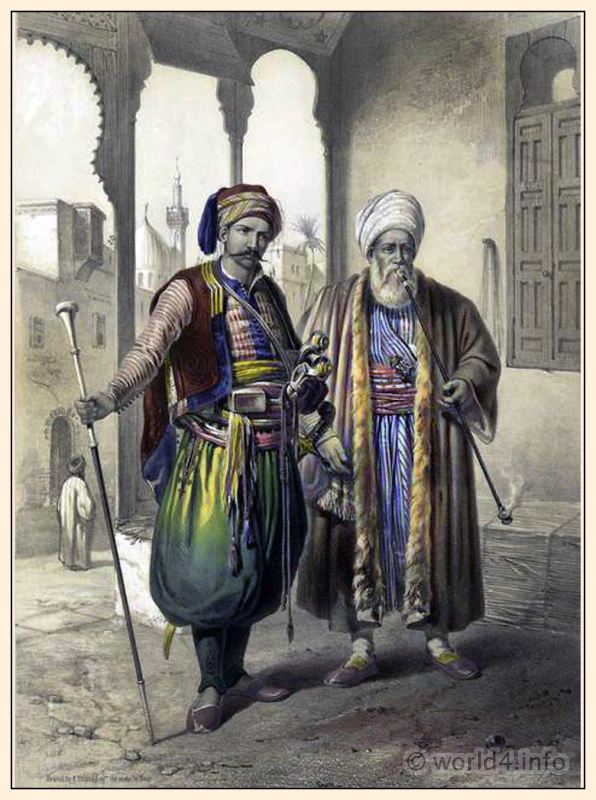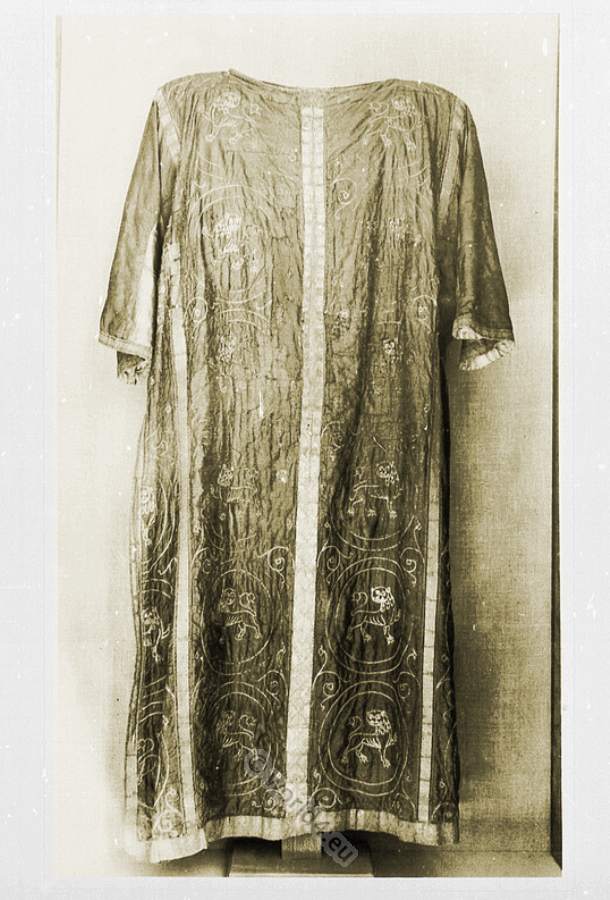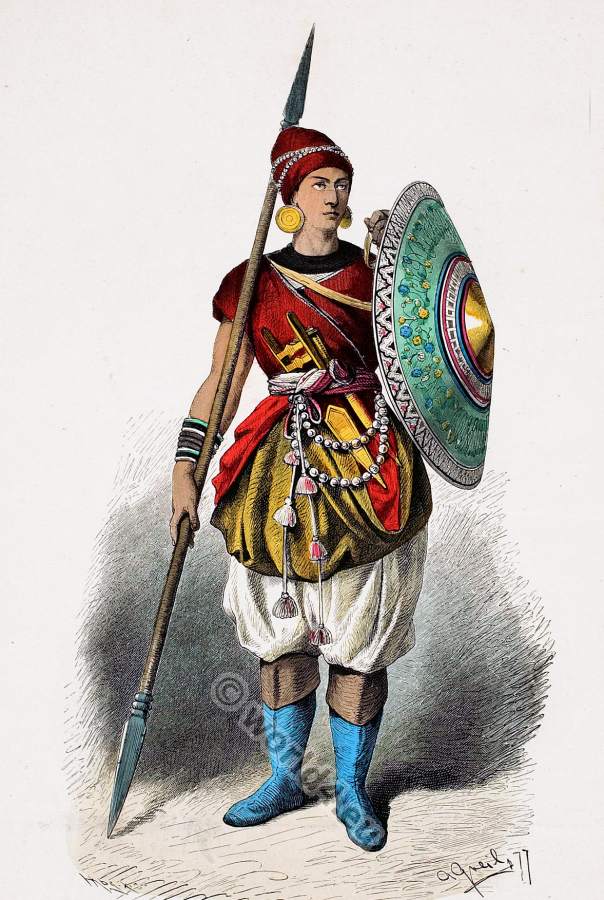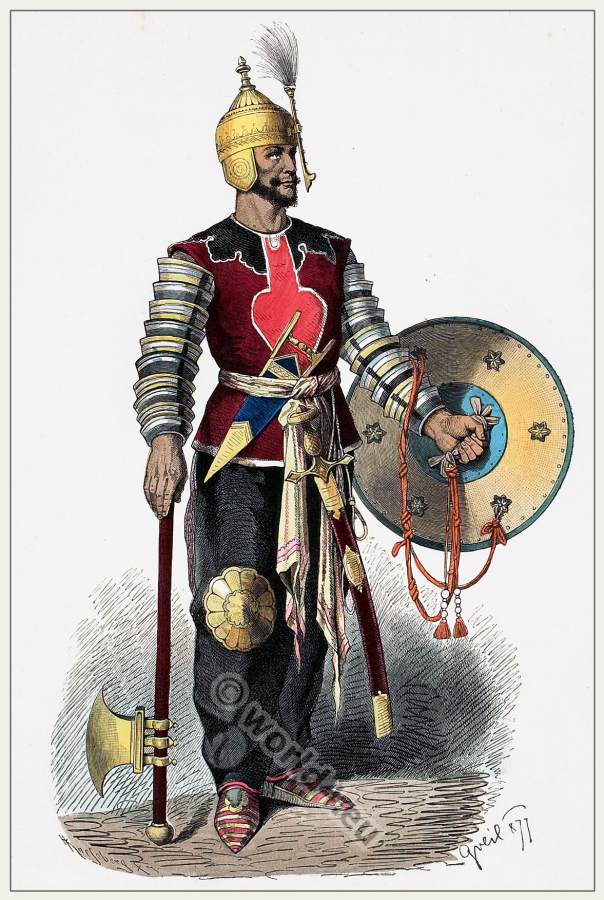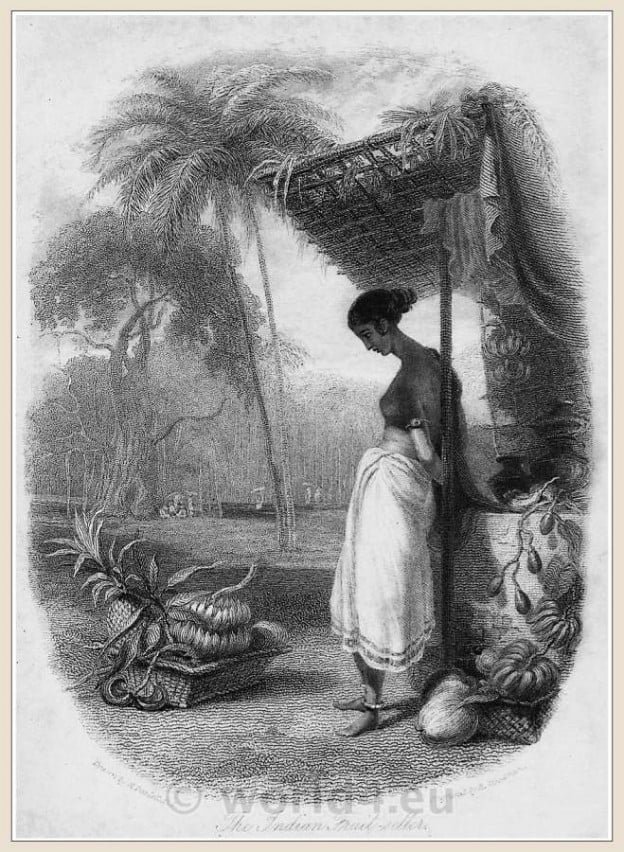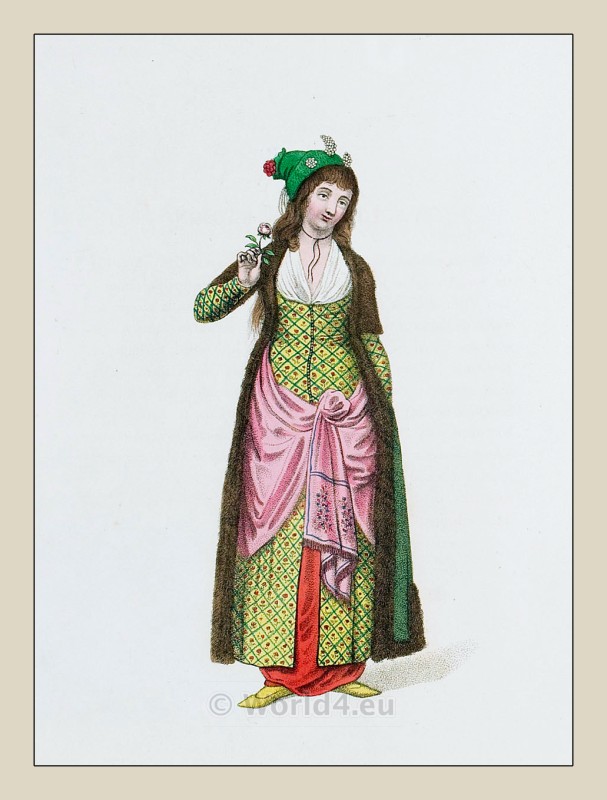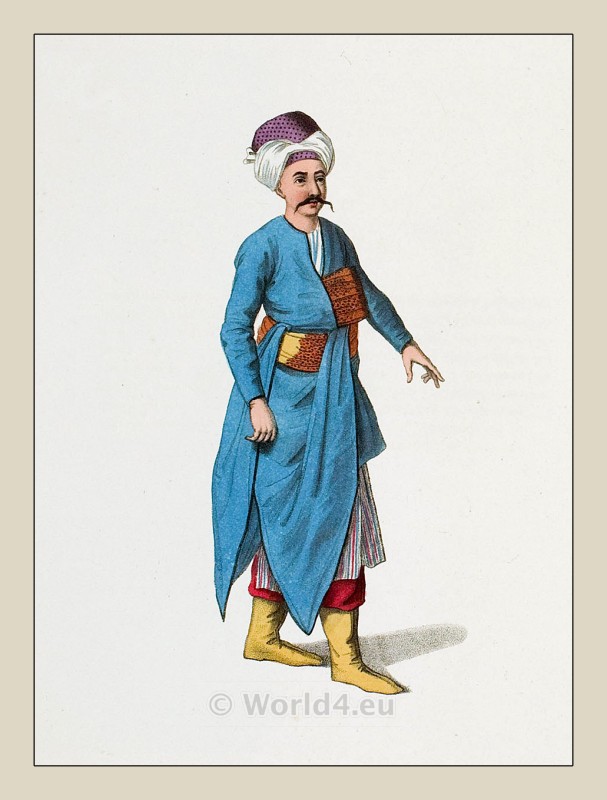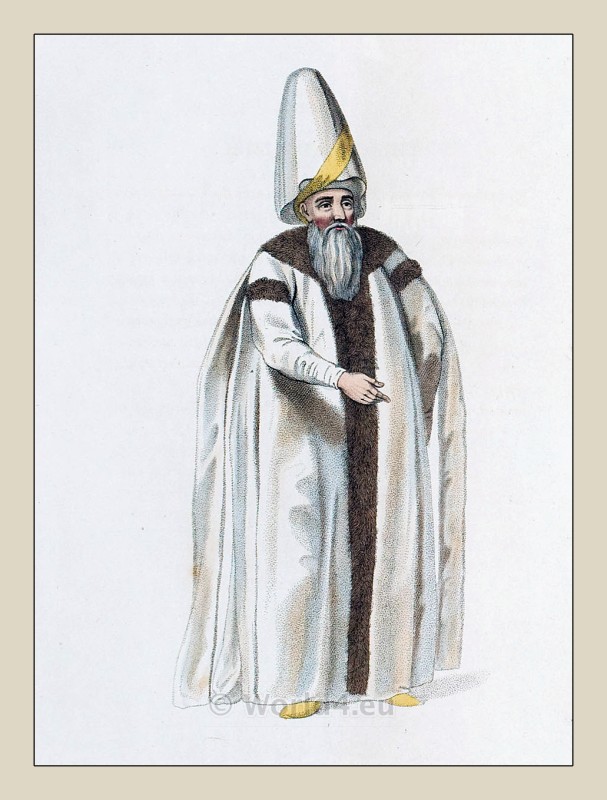A Janissary and a Merchant in Cairo. Source: The Oriental Album. Characters, costumes, and modes of life, in the valley of the Nile by James Augustus St. John (1801-1875). Painting by… Read More
Category: Asia
Costume and fashion history of Asia. Manners and Customs. Collected from rare sources.
Medieval Persian Tunic. Leonata. 12th Century.
Persian tunic. 12th c.
India Spearmen. Soldier with spear, dagger and shield.
Medieval military dress from India. Indian spearmen 15th c. Artist: Alois Greil.
Armenian orthodox catholic priest costume 1840
Armenian orthodox catholic priest costume 1840. Traditional ecclesiastical clothing. “Sheets for costume design: historical and folk costumes. Published by Franz Lipperheide, 1876-1887.
Persian warrior in full armor 15th century
Medieval Persian warrior. He is armed with helmet, hauberk, shield, short sword and battle ax.
Persian archer in full armor, 15th century.
15th c. Persian archer. Artist: Alois Greil. Sheets for costume design: historical and folk costumes.
Fruit seller in traditional Indian costume, 18th century.
Fruit seller in traditional Indian costume, 18th century.
A Sultana or Kaddin of the Imperial Ottoman Harem.
The Plate itself is a portrait of a Sultana or Odalisk, and are called, Kaddins, or Kadeuns.
A Tchocadar, servant to affluent Ottoman house.
Choi or Tchocadar Aga. Every person, who can afford it, constantly employs a great number of domestics, called Tchocadars.
The Grand Vizier. Ottoman Empire officials and ethnic groups.
The Supreme Vizier or Grand Vizier (Wazir-e Azam and Sadr Azam) was in several Muslim countries, the Prime Minister

